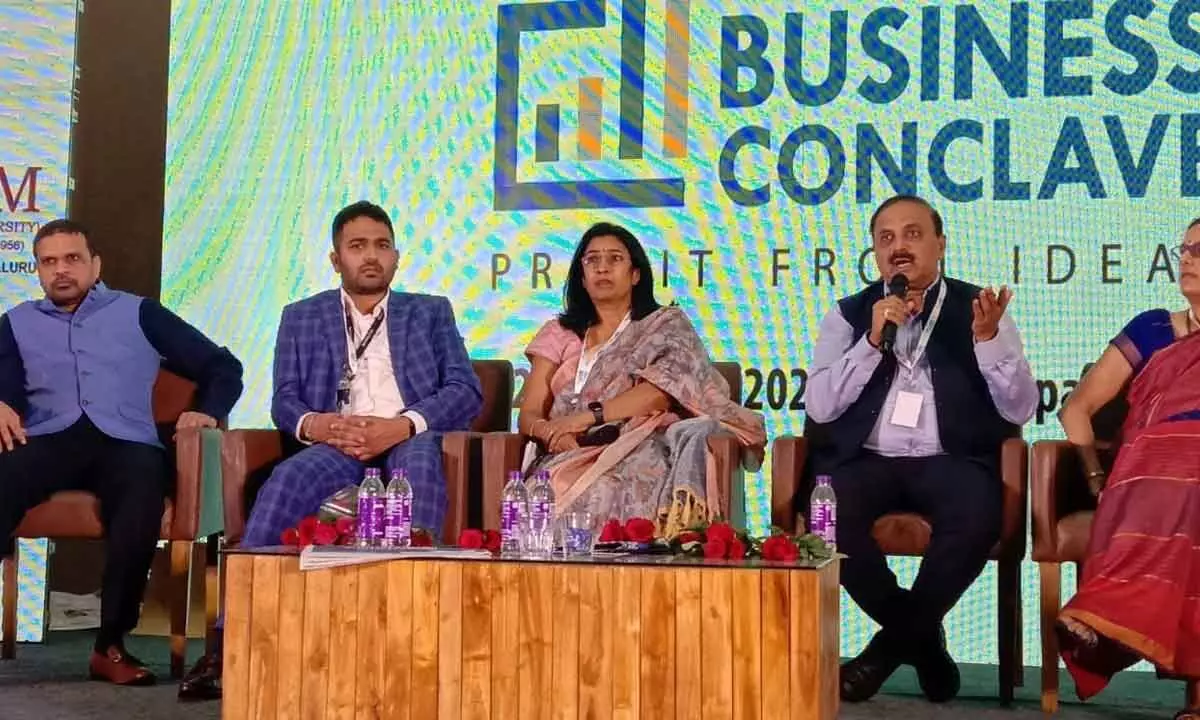Where is Indian electronic ecosystem headed?

The electronics industry is one of the fastest-growing industries in India where a major section of the society is handholding smartphones or tablets, or they are delved into working in laptops, which are connected to routers for internet connection. Electronics at home include televisions, printers, washing machines and air-conditioners. Total electronics market in India in 2019 – 20 was around $120 billion, according to press release published by MeitY in January 2022.
About $44 billion worth of the products are imported and $76 billion worth of the products are produced domestically. However, the domestic manufacturing value add was only 15 percent to 20 per cent , which is a very big challenge for this industry. This industry is expected to grow to $300 billion by 2025-26 as per this report by MeitY which includes $180 billion of local demand and $120 billion of exports.
Electronics manufacturing analysing the value chain of any electronic product suggests that 40 per cent value is in to components of PCB which are semiconductors, passives, connectors, display and battery. Now, there is hardly any component manufacturing ecosystem existing. So, we are importing more than 90 per cent components as we don't have domestic manufacturing of these components, missing out on 40 per cent value.
Next big value is into IP and technology design. We are doing very well as design services for the world or in captive design centres of the global company however IP value does not get recognised for India. There are very few product companies that are designing and manufacturing electronics products from India. So, many times again, we miss out on the value of IP technology by acquiring a CKD or SKD kits from a global companies and only do SMT assembly or system integration in India, which gives only 10 per cent to 12 per cent in local value addition. In the whole process what's happening is that we are ending up doing very low value add manufacturing. This is the biggest challenge that the Indian electronics ecosystem has.
Development of electronics ecosystem
creating a component manufacturing ecosystem or supporting the Indian startups and Indian IP creator companies for successful product development is a step towards development of electronics ecosystem. Recognising IP technology in India also creates high manufacturing value addition.
Government of India has announced schemes of PLI, SPECS , Semiconductor Wafer Fab Policies, Design Link Incentive and EMC 2.0 have emerged as strong enabling instrument for attracting investments into the electronic industry.
With the new 3 Semiconductor Fab Policy, SPECS programme for Components and Design Link Incentive Scheme announced by Government of India "high value added "eco system will be possible.
Global semiconductor market was $440 in 2020, by 2030 it will be more than $1 trillion. Indian semiconductor market stands at $15 billion (Rs 1.13 lakh crore) in 2020 and is estimated to reach $63 billion (Rs 4.73 lakh crore) by 2026. Current Semiconductor Local manufacturing in India is less than 1 per cent.
Semiconductor industry can be broadly classified under three categories: Logic, Memory and DAO (Discrete, Analog and Others) with 42 per cent, 26 per cent and 32 per cent of the industry revenue, respectively.
India has great talent for VLSI chip physical design, Verification and related software development . All major global Semiconductor companies have their captive Design centers in India and our Design services industry doing major projects. There is great need to develop local fabless industry.
DLI Scheme to Develop Fabless Design Ecosystem
Tenure: Applications under the Scheme will be initially open for three years from January 2022. The applications received under the scheme will be appraised on an ongoing basis and implementation will continue as per the approvals accorded under the scheme. Incentives under the scheme: Financial incentives shall be provided to approved applicants under the Scheme in the following manner Product Design Linked Incentive - Reimbursement of up to 50 per cent of the eligible expenditure subject to a ceiling of Rs15 crore per application will be provided as fiscal support to the approved applicants who are engaged in semiconductor design for integrated circuits (ICs), chipsets, system on chips (SoCs), systems & IP cores and semiconductor linked design.
The applicants should submit their proposals for development of semiconductor design for integrated circuits (ICs), chipsets, system on chips (SoCs), systems & IP cores and semiconductor linked design that can be demonstrated in an operational environment and are ready for volume production.














